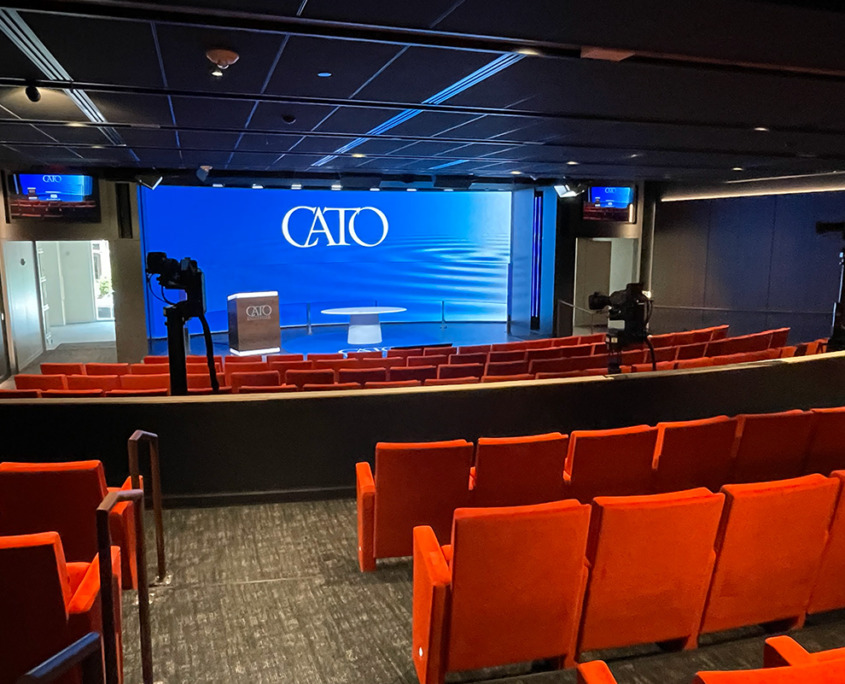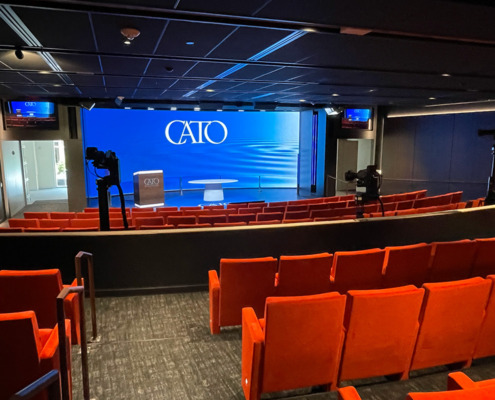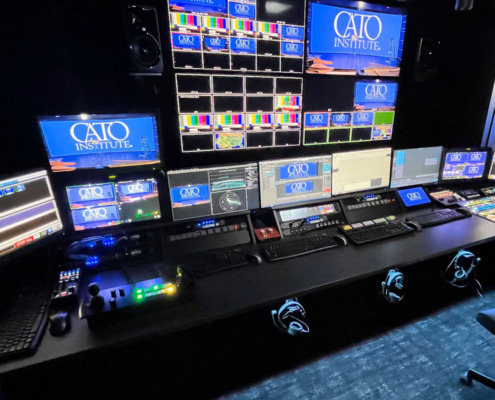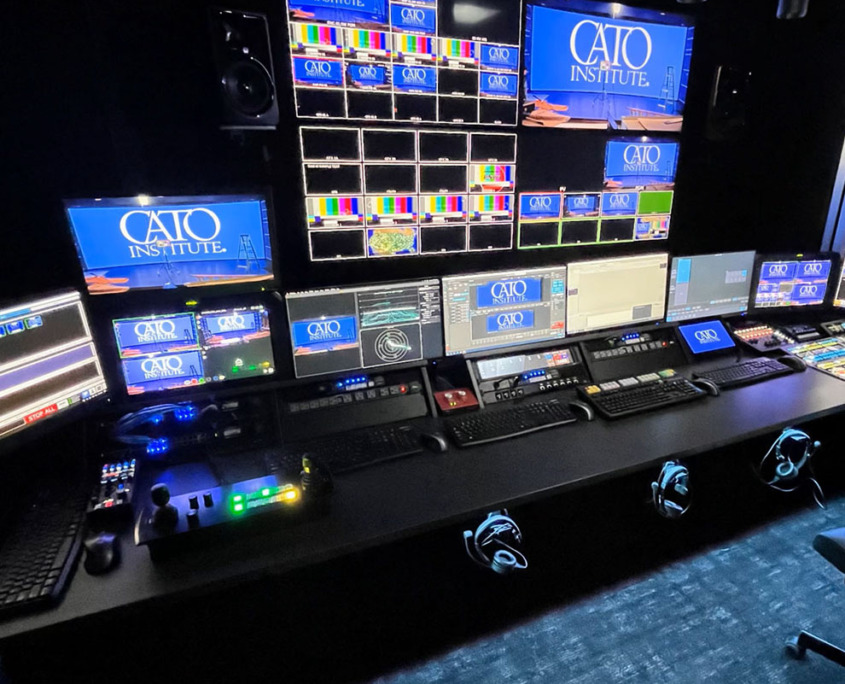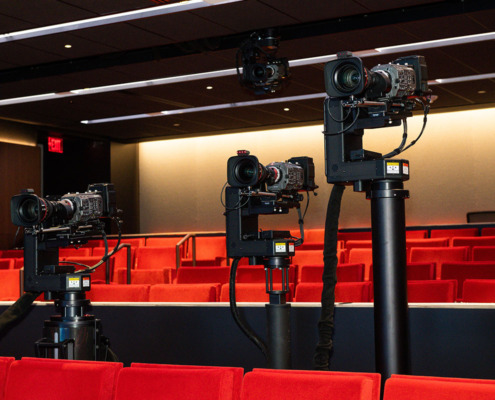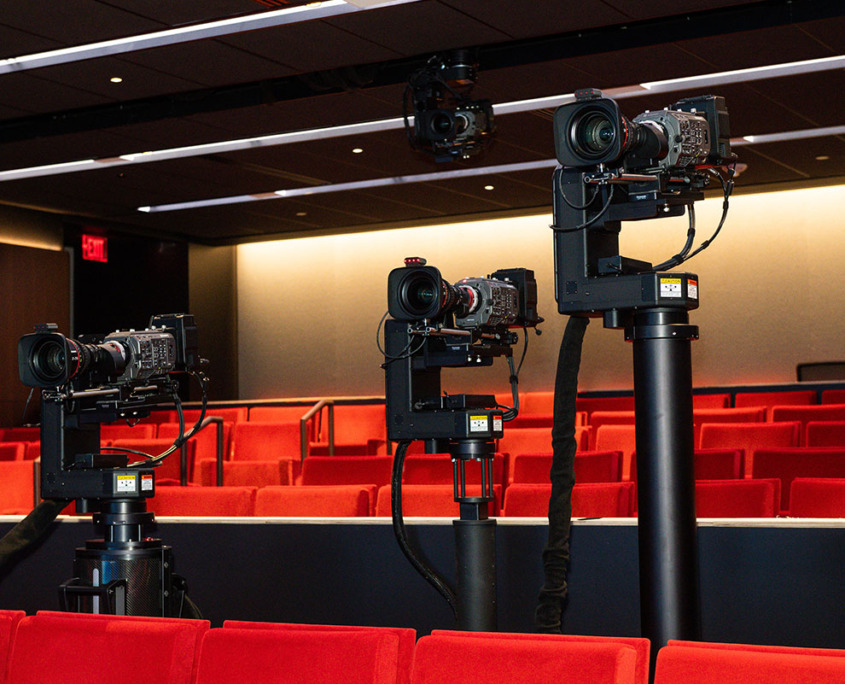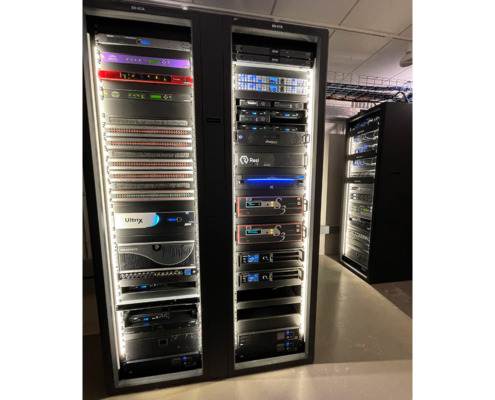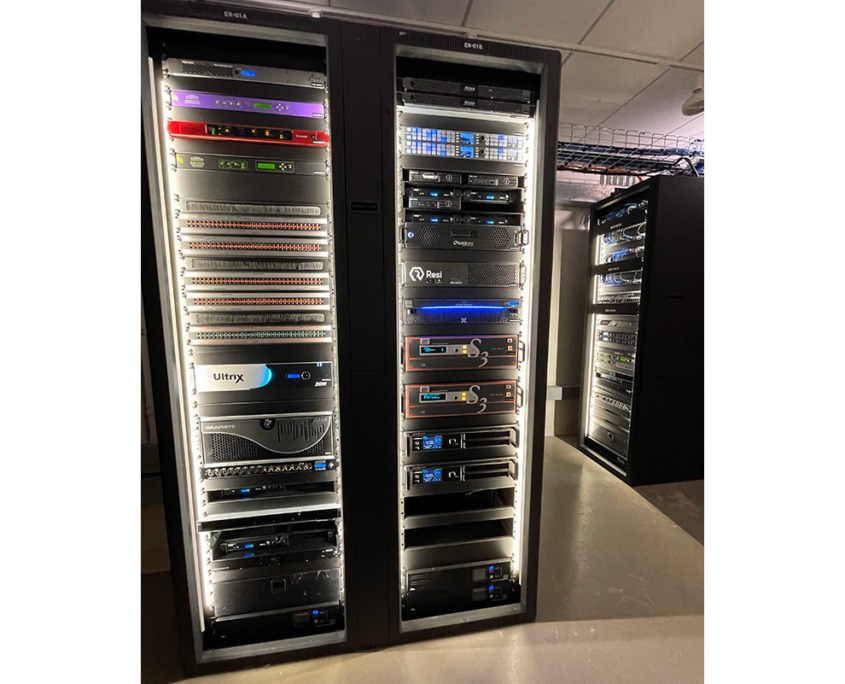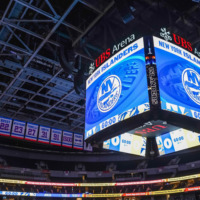Cato Institute
Media Production Studio Leverages Robotics to Enhance Viewing Experience for Live & Remote Audiences
The Cato Institute is a public policy research organization whose mission is to create a presence for new ideas in mainstream policy debates. They frequently invite key government officials including members of Congress and the Fed to their Washington, D.C. facility for policy-driven presentations and wanted to create a virtual environment that would yield a more engaging experience for those attending in person as well as via streaming.
To renovate and modernize their existing presentation space, Cato partnered with global architecture and design firm Gensler. Given the complex video requirements needed to bring the space to fruition, Gensler in turn reached out to long-time partner Diversified.
Diversified was originally engaged to provide the video related portion of the project scope. However, as the system’s complexity continued to grow, the need for a technology partner capable of successfully delivering the full scope became more apparent. With the multidisciplinary expertise required for such a project, Diversified’s ability to effectively deliver all system components helped to streamline and simplify the coordination with Cato and Gensler.
From concept to completion, the team designed and delivered a comprehensive technology system that includes a curved LED wall, lighting and audio as well as full video production. The goal was to create a “live studio” environment that would support a live audience while simultaneously producing a high-quality live stream for thousands of remote viewers.
To support optimal sightlines for audience members, three robotic cinematic cameras move left to right across the width of the studio in addition to a unique inverted robotic camera mounted to a ceiling channel to capture wider shots from a unique perspective. The use of robotics enables a better view for audience members by eliminating the need for manned operators directly behind the cameras.
Thanks to the level of automation, programming and strategic use of touchscreen technology that went into the overall system design, the entire system can be controlled by as few as three people without compromising the production quality. This enables Cato to confidently present their message, knowing it will be delivered at a high quality every time.

